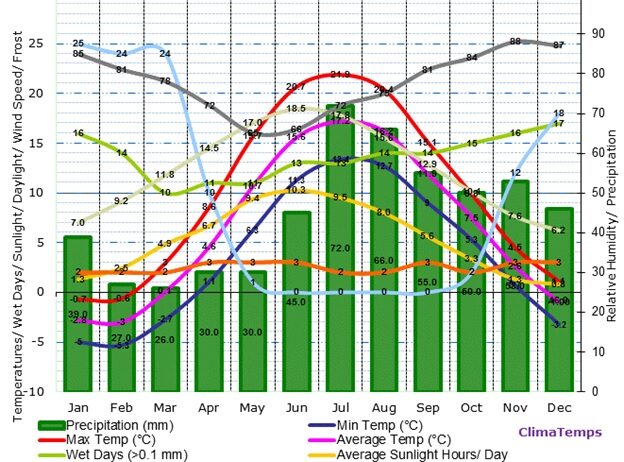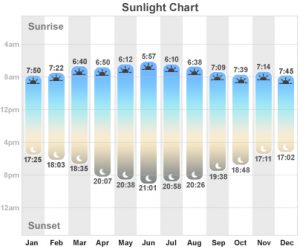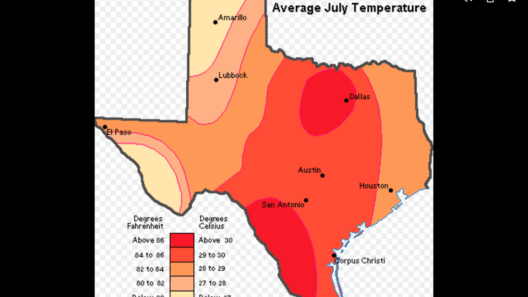Europe boasts an extensive tapestry of climatic conditions, reflecting a remarkable gradient of latitudes, altitudes, and even maritime influences. This continent experiences a mosaic that varies from the balmy Mediterranean coasts in the south to the rigorous cold of the Nordic regions in the north. Such diversity is intriguing not only for meteorologists but also for travelers seeking varied experiences, outdoor enthusiasts, and those fascinated by the interplay of geography and climate.
The Mediterranean climate, characterized by hot, dry summers and mild, wet winters, adorns the southern fringes of Europe—nations like Spain, Italy, and Greece. This climate type is quintessential for the flourishing of the viticulture, olive groves, and diverse agriculture that have long been synonymous with these regions. The sun-drenched beaches invite throngs of tourists, eager to bask in the golden rays and partake in the vibrant cultural narratives that accompany Mediterranean lifestyles. However, beneath this surface of unremitting sunshine lies a more profound nuance: the increasing impact of climate change is bringing about shifts in weather patterns. Erratic rainfall, prolonged droughts, and extreme heat waves pose significant challenges to local economies and ecosystems.
Moving northward, one encounters the temperate oceanic zones of Western Europe, where countries such as France, the United Kingdom, and the Benelux nations experience a climate tempered by the Atlantic Ocean. This climate is generally characterized by mild conditions throughout the year, albeit with more precipitation than their Mediterranean counterparts. The ocean provides a moderating effect, preventing extremes—although the frequent rain can be seen as a dampening factor for outdoor plans. The region is particularly noted for its lush landscapes, rich biodiversity, and agricultural productivity. Yet, the underlying concern of global climate fluctuations is palpable here as well, with rising sea levels threatening coastal communities and changing rainfall patterns unsettling the delicate balance of regional ecosystems.
As one ascends further into the heart of Europe, continental climates begin to take precedence. Central and Eastern Europe, including nations such as Germany, Poland, and Hungary, witness more pronounced seasonal shifts, with warm summers and cold winters. The variability in climate here is stark; pines thrive in the north while deciduous forests populate the south. This stark contrast lends itself to vibrant autumnal vistas, with leaf-peeping becoming an annual ritual for many. Nevertheless, the harsh winters often wreak havoc on infrastructure and energy resources, and with the increasing frequency of extreme weather events, the challenge of adapting to these changes is a pressing reality.
Yet, no discussion of Europe’s climate is complete without venturing into the Nordic realm, where countries like Sweden, Norway, Finland, and Denmark experience stark and frigid winters juxtaposed with surprisingly mild summers in many areas. The climate varies from maritime influenced in coastal areas to continental further inland, creating diverse ecosystems from lush forested hills to barren tundra. The long summer days, characterized by the phenomenon of the Midnight Sun, create a brief but bountiful growing season, giving rise to incredible natural beauty. However, the indignant chill of northern winters can be harsh, presenting trials for inhabitants and creating resilience within communities. The deep-rooted connection between climate and the cultural narrative of these Nordic peoples often manifests through their myths, traditions, and a profound respect for nature.
In discussions of Europe’s climate, the phenomenon of climate change is ever-present, threading through the narrative like an uninvited guest. Within the diversity of climates, certain areas face exacerbated consequences. Melting glaciers in the Alps and the Arctic are stark reminders of changing global temperatures, bringing flint in the discussions about sustainability and conservation efforts. Each region grapples with unique challenges—rising sea levels reshape coastlines and threaten livelihoods, while heat extremes burden both urban populations and agricultural outputs.
Collectively, Europeans are becoming more cognizant of their climatic footprint. Initiatives aimed at reducing emissions, fostering sustainability, and adapting to inevitable changes are in various stages across the continent. From urban centers embracing green architecture to rural communities adopting sustainable agricultural practices, the movement toward a cohesive climate resilience strategy is palpable, yielding a sense of collective aspiration.
Moreover, Europe’s cultural and historical legacy deeply intertwines with its diverse climates. The Greeks and Romans established agricultural practices that are still relevant today, while Vikings adapted to and thrived in their chilly northern realms. The architectural marvels found across the continent, from ancient stone ruins to modern eco-friendly designs, reflect the close relationship that European societies have with their environment. Navigating this climatic landscape reveals not only a variety of weather conditions but also a tapestry of human experience, adaptation, and evolution intertwined over centuries.
In summation, the climate of Europe provides myriad experiences that range from the warm, soothing Mediterranean sun to the icy Nordic chill. Each climatic zone is infused with history, culture, and present-day challenges that reflect the complex interplay between humanity and nature. As the continent faces the dual specters of climate change and environmental degradation, a concerted effort towards sustainability is both vital and pressing. The fascination with Europe’s varied climates lies not merely in the observable phenomena but in the intricate relationships that bind people to their surroundings, the challenges they face, and the resilience they exhibit in the pursuit of harmony with their environment.








